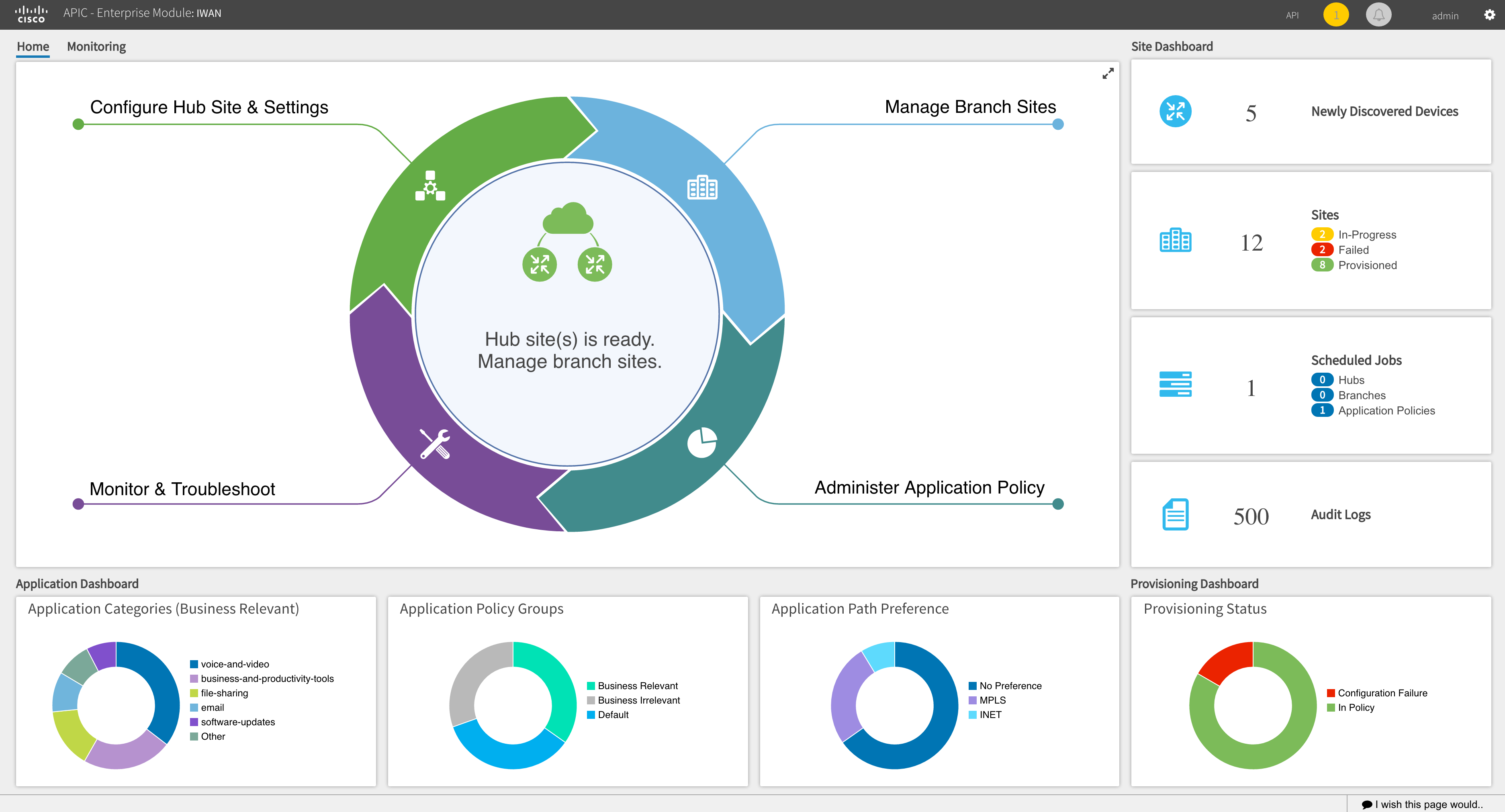































I believe I can speak for the Cisco Enterprise Networks team that today's announcement of Best of Interop finalists is a proud moment for all the product managersandengineers that have invested years of man-hours to bring the Cisco DNA Architecture to life . We have made some great inroads with Cisco DNA with a very positive reception from press and analysts. The further validation by the Best of Interop judges is the icing on the cake. We are seeing many competitors mimic the DNA end-to-end strategy, but at the end of the day execution is key. And, Cisco Enterprise is firing on all cylinders as a finalist for not one, not two, but three nominations across SDN, Mobility and Networking categories. Here's the summary on each nomination. Check them out and learn how each can benefit your organization!
SDN Finalist: Cisco DNA Controller -APIC EM
APIC-EM is Cisco's SDN Controller for Enterprise Networks and delivers on the premise of automation and innovation for legacy, current and future network elements in the WAN and Access domains. Support for legacy elements is of vital importance to avoid a critical hurdle to wider-spread SDN adoption; Cisco has over 100 deployments scaling up to 4000 devices today. APIC-EM provides automation when it comes to provisioning both physical and virtual network functions and advanced network features contained within those. It thereby eliminates the need for repetitive, manual configuration for Day 0, Day 1 and Day2 operations, and frees up time for IT innovation via programmability through intuitive, easy to consume RESTful APIs. Here are some capabilities that can benefit your organization today:
APIC-EM is available for free download to everybody with an account on developer.cisco.com.
Networking Finalist: Cisco Enterprise Network Functions Virtualization (Enterprise NFV)
 Enterprise NFV decouples software from hardware to enable customers to deploy network services in minutes, on any platform. It is the first NFV solution designed, built and available in the market with enterprise customers in mind versus service providers. It transforms how customers design, provision and manage network services including routing, security and WAN optimization services traditionally served by a physical, dedicated hardware.
Enterprise NFV decouples software from hardware to enable customers to deploy network services in minutes, on any platform. It is the first NFV solution designed, built and available in the market with enterprise customers in mind versus service providers. It transforms how customers design, provision and manage network services including routing, security and WAN optimization services traditionally served by a physical, dedicated hardware.
Cisco Enterprise NFV advances the state of the art by:
Mobility Finalist: Flexible Radio Assignment
Flexible Radio Assignment is an early example of how Cisco is automating the network by building intelligence into the network to understand changes and then adapting to meet those changes in demand. Flexible Radio Assignment allows the access points to uses a 5GHz. radio and a second radio that can run in 2.4GHz. or 5GHz. band enabling the access point to adapt to the environment. For example if a flash crowd or gathering occurs in a given footprint, such as a common area, the access points will identify the increase in wireless demand and can automatically change the second radio from 2.4Ghz. to 5GHz. to boost capacity in that area. This delivers a better experience and minimizes the impact of device density.
 Tags chauds:
NFV
interop
APIC-EM
flexible radio assignment
#BestofInterop
Tags chauds:
NFV
interop
APIC-EM
flexible radio assignment
#BestofInterop